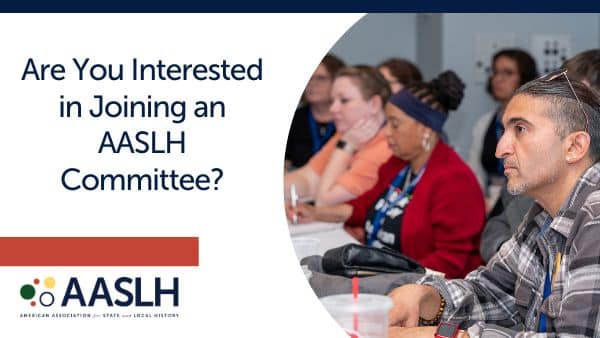
By John Dichtl, President and CEO, AASLH
Eight weeks into the pandemic (or more, depending on what part of the country you’re in), and finally we can begin to imagine some resumption of something that feels somewhat more normal than how things are now. Whatever happens for history organizations will be a lot different than how things were. We are all being transformed in this historic moment.
The staff and I at AASLH used the past several weeks to focus on three things. First, AASLH has tried to keep the history community informed about COVID-19 related resources. Like other associations, we have collected and shared important web links and documents, from information about sanitizing surfaces to Google Doc listings of museum furloughs, and from surveys about the pandemic’s impact to details about federal grants and loans.
Second, we pivoted to provide online forum space for discussion and interpersonal connecting while also producing a new kind of webinar. Several weeks ahead of schedule, we opened the AASLH Affinity Communities’ discussion spaces and then created online “AASLH Conversations,” low-cost/free webinars where astute colleagues discuss their own and their institution’s responses to the COVID-19 crisis. Topics such as “Planning for an Uncertain Financial Future” and “Historic Sites and COVID-19” drew more than 200 and 300 registrants each. Now that the zeitgeist has shifted to the possibilities of reopening closed museums and historic sites, the first webinar we have to offer on this topic already has more than 400 registrants. To date, there are ten of these “AASLH Conversations” and we have more already scheduled for the next few weeks. Thanks to swift help from that National Endowment for the Humanities, we were able to commit to these special webinars and to cover honoraria for the presenters, devote staff time for production and promotion, offer closed captioning for accessibility, and handle the annual fees for the multiple online platforms we are using to make it all work.
Our third area of focus has been keeping an eye on national developments, trying to affect Congressional legislation for economic stimulus and relief. This has required close cooperation among several national associations. Early in the crisis, the American Alliance of Museums’ Laura Lott and directors of other national museum associations came together to make sure that museums and related organizations were included in Congressional thinking about the economy. Thanks to AAM’s advance work on Museums as Economic Engines and years of research for Museums Advocacy Day, the field was ready to convince House and Senate members of the vital roles that our institutions play in their communities. From AASLH to the Association of Science and Technology Centers, Association of Children’s Museums, American Public Gardens Association, the Association of Zoos & Aquariums, and others, we each were able to provide research about our members’ situations to paint a vivid picture of their needs. (Saying this reminds me that your institution’s response today to AASLH’s brief visitation survey will help all of us understand the true impact of the pandemic, looking back a year from now.)
You learn who your friends are in times of trouble. My experience working with the directors of these sister associations over the past several weeks has been deeply heartening. It is good to be reminded of all that we have in common.
Our associations together have helped to influence legislation and inform our members. We have also stayed in close contact with the leadership team at IMLS. Crosby Kemper, the new director there, has been a generous colleague of the first order. Our informal group and all of AASLH have been grateful for what IMLS, and the NEH too, have been able to do in shifting grant priorities and quickly making new funds available to museums and other history organizations in this crisis.
All of us in the vibrant community that is AASLH have a steady march of work ahead of us in this crisis time. There is much to figure out about reopening our institutions, and many paths to follow. AAM has released an incredibly helpful two-page document “Considerations for Museum Reopenings,” which lays out crucial things to keep in mind. Later this afternoon, AASLH will be convening the State Historical Administrators Meeting group to compare notes about state-level institutions steps toward reopening.
I think we know there is no longer a normal to go back to. The recovery will be phased—we’ve all heard that many times now. State by state, region by region, there will be movement forward and probably some reversals and missteps. Some institutions are in a hurry to reopen and are trying to get their governor’s attention to be included among the first businesses allowed to open their doors. Other institutions do not feel ready yet and want much more scientific certainty about whether or not it’s safe to reopen. I have heard of one museum that has made the financial decision to simply stay shut for two years and instead focus on its community engagement programs. There will be a lot of variety in how we proceed, which is therefore all the more reason to stay in touch, sharing the lessons and risks together.
How is your institution coping with COVID-19? Share your ideas and experiments with the field on our blog. Email [email protected] to submit a blog post.



